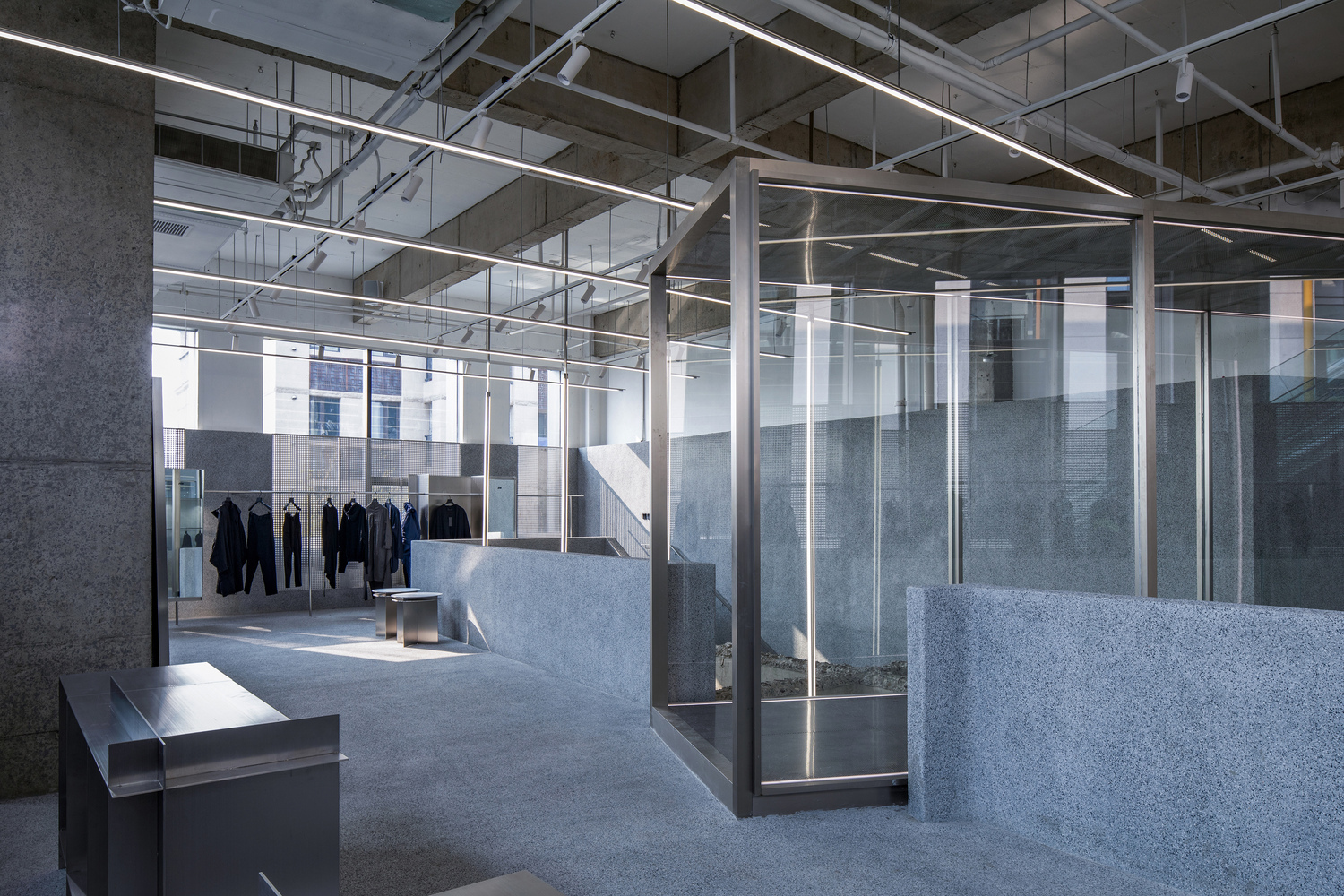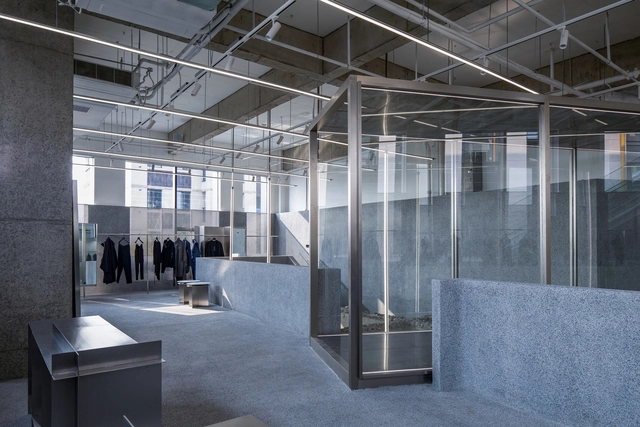
To conclude the chapter on 2024, a look back at ArchDaily's extensive database projects highlights some standout interior design trends that defined the year. This includes the use of stainless steel, often paired with concrete and gray tones, to create interiors with sophisticated, industrial elegance. This article looks at the increasing importance of stainless steel as an interior element and examines its applications, combinations and its growing appeal despite persistent perceptions of its cold, industrial character.
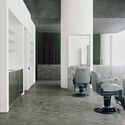
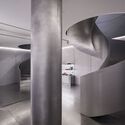

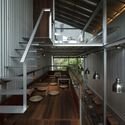

Mastering Precision: The Rise of Stainless Steel in Contemporary Design
Stainless steel has long been associated with a sharp, rigid and utilitarian aesthetic and is often viewed as less luxurious than materials such as marble or exotic stone, particularly in regions such as Asia where opulent textures are highly prized. However, this perception is gradually changing. Established retail brands and premium kitchen manufacturers are increasingly embracing stainless steel, showcasing its clear benefits: durability, wear resistance and the precise, clean lines it offers. Combined with a sandblasted and matte finish, its ability to subtly reflect light enhances interiors by creating indirect lighting, conveying a sense of sophistication that is often overlooked.
Related article
Miniature Architecture: 17 Projects Exploring Interior Design for Kids
The increasing popularity of stainless steel can also be attributed to its inherent challenges and the craftsmanship required in its processing. Unlike natural stone or wood, which allow for on-site adjustments such as cutting and sanding, stainless steel offers minimal room for error. Due to the rigidity of the material, even the smallest misalignment or surface irregularities can be revealed, making flawless workmanship critical. In some ways, this material makes it much more difficult for builders to cut corners in manufacturing. This sophisticated nature has made stainless steel a material that signals design and construction precision.
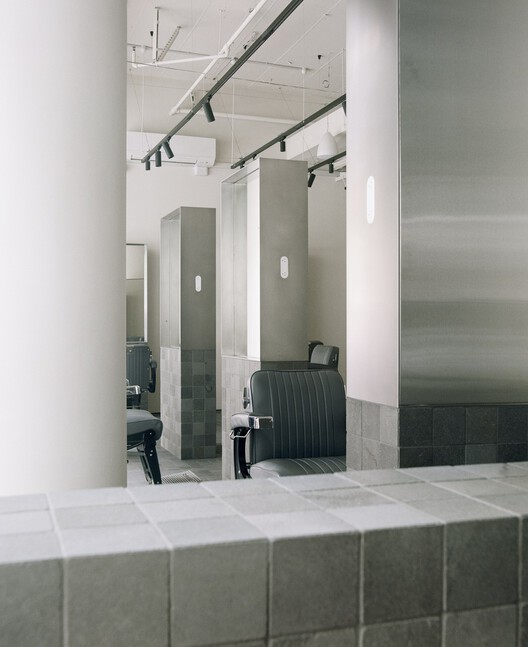
Similar to architectural glass, stainless steel requires foresight in design and careful planning in construction. Its sharp, laser-precise edges and alignments, when executed correctly, enhance a project and provide a visual language of technical expertise and high-caliber craftsmanship. Designers who successfully incorporate stainless steel into their projects demonstrate a mastery of sequence and detail, pushing the material beyond its industrial roots into the realm of modern luxury.
Manufacturing fluid: Stainless steel in organic forms
Typically perceived as cold, rigid and sharp, stainless steel takes on a new identity in the projects highlighted below. It challenges these stereotypes and creates a hybrid aesthetic that balances her signature precision with organic softness. Through advanced manufacturing techniques, stainless steel tubes are bent into intricate shapes, transforming them into display shelves, decorative elements and spatial elements. At the MKR store in Seville, stainless steel dominates the space, unifying the interior with a striking vertical spiral staircase and precisely curved panels, exemplifying technical rigor and meticulous craftsmanship.
The Sandy Liang Store not only pushes the boundaries of the physical properties of stainless steel, as seen when bending steel plates, but also reinterprets the material in innovative ways. Here, stainless steel tubes are formed into flowing, organic shapes, while stainless steel mesh gives the material an atypical dimension. This mesh acts as a semi-transparent screen and plays with light, texture and sound to create a softer, more dynamic presence. Used as wall decoration, flexible room dividers and mesh partitions, the material defines spaces while maintaining openness and giving the interior an airy volume. These creative applications illustrate stainless steel's versatility and potential to enhance the user experience in unexpected and imaginative ways.
Sandy Liang Store/Fast Studio
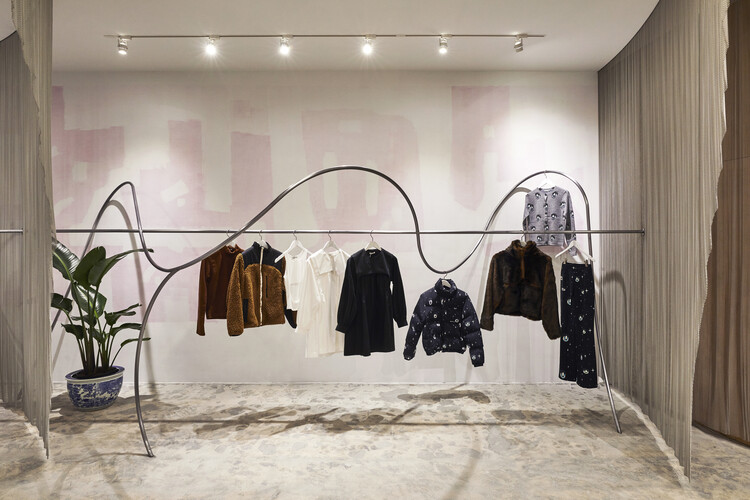
Milla Nova Boutique Store / Balbek Office
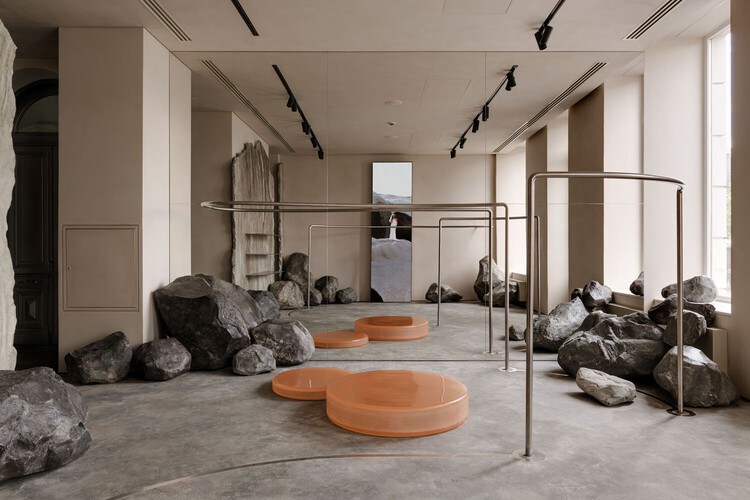
MKR Store in Seville / Guillermo Vázquez Consuegra
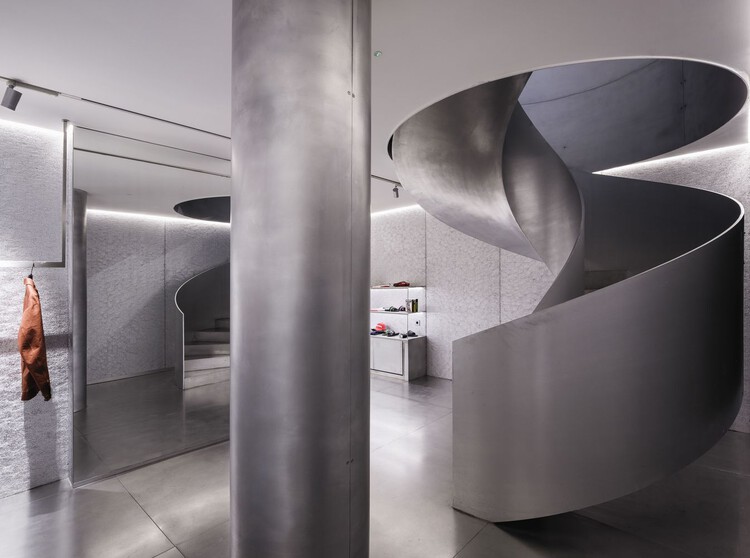
Illuminating interiors and the reflective potential of stainless steel
One of the most underrated properties of stainless steel is its ability to diffuse and reflect light. Depending on the specified surface, designers can manipulate the material to control the uniformity, brightness, and clarity of the reflected light (or image). This allows for a range of effects, from a gently diffused moiré finish to a sharp, clear reflection that is subtly toned down for a sophisticated visual impact.
In the following design examples, stainless steel is not just a load-bearing element, but a defining feature that is often used on architectural surfaces such as walls, floors and other wide areas. Unlike projects that use the material sparingly for accents, these designs utilize stainless steel as a cohesive, space-defining element. Its reflective properties are skilfully used to enhance interior lighting and create moiré-like reflections or, as in the andwander GINZA SIX store, a dimmed mirror effect on the floors. Because of its resistance to abrasion and wear, stainless steel is particularly well suited to large-area applications, including high-traffic areas, where concerns about uneven wear often discourage the use of more delicate or exotic materials. By carefully defining the finish, designers can seamlessly integrate stainless steel into the lighting strategy, ensuring it complements and enhances the overall interior design.
NINYAS Restaurant / Ignacio Urquiza + apda Ana Paula de Alba
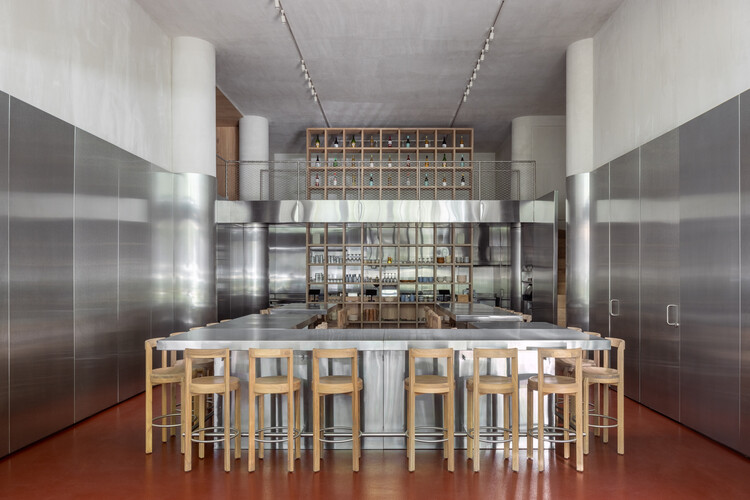
andwander GINZA SIX Store / Jo Nagasaka + Schemata Architects
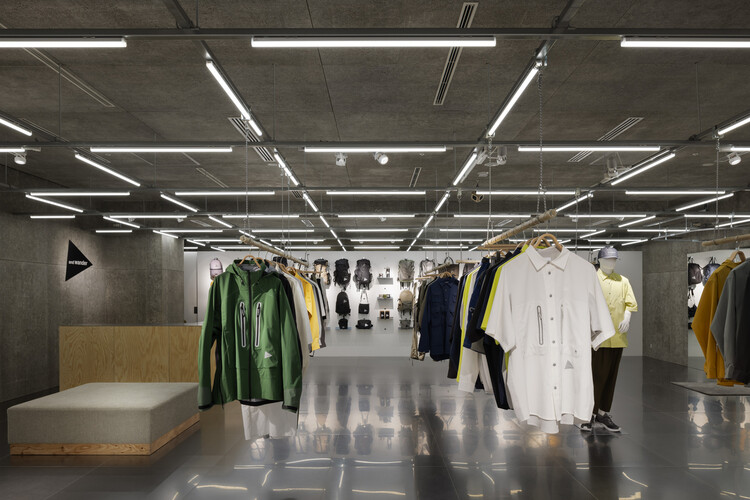
Brunstranda Service Building / Vatn Architecture + Jørgen Tandberg Architect MNAL
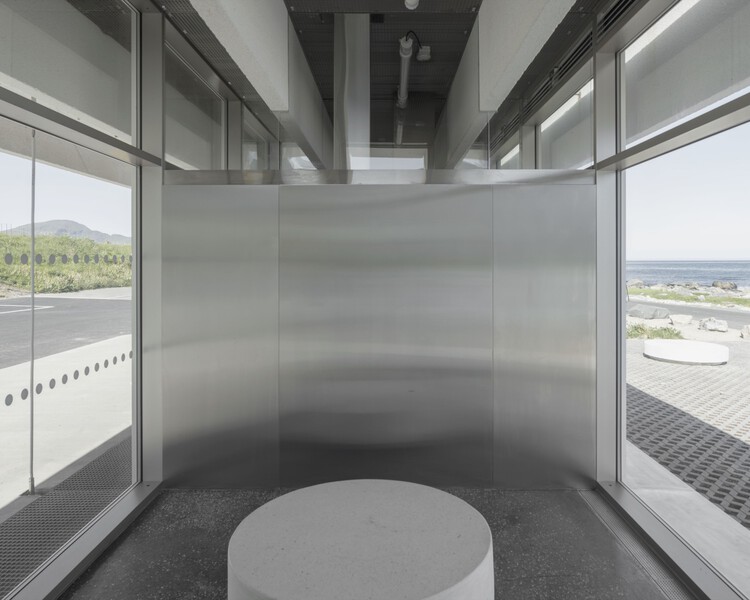
Ton Corner Coffee Shop / TON Architects
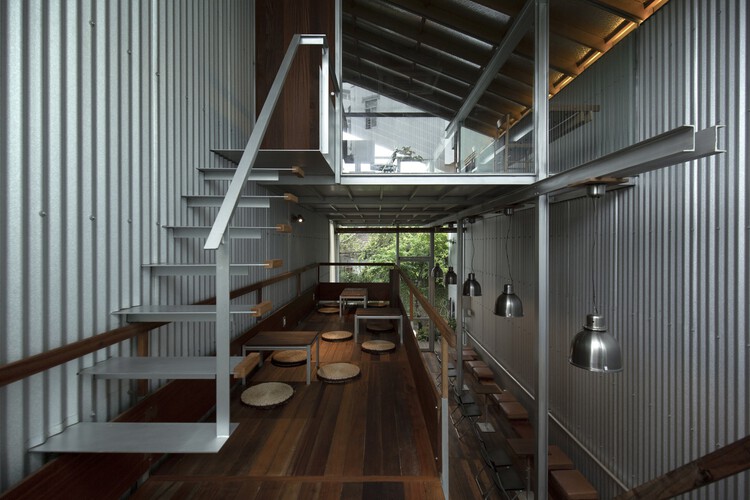
Beyond gray: stainless steel and its structural harmony
One of the most popular ways to incorporate stainless steel into interior design is in rooms that feature a neutral, often monochromatic, color palette. In such projects, the focus shifts from bold colors to the interplay of textures, creating depth and richness. A muted color scheme serves as the perfect canvas for designers to contrast, highlight and experiment with different textures. Stainless steel, with its versatile finishes, complements other gray-toned materials such as microcement, concrete and stone, adding a special layer of visual and tactile appeal.
Within this understated palette, the reflective properties of stainless steel act almost as a secondary light medium, introducing dynamic visual elements that can evoke the shimmering quality of water reflections. In the Stravinskij Salon, for example, stainless steel with a moiré mirror finish is paired with gray leather, stone, tiles and white paint, creating a fascinating play of materials. Within this strictly controlled and sterile material palette, each material contributes a unique quality: stone and tiles add texture, white paint provides crisp clarity, gray leather provides softness, and sandblasted stainless steel provides a luminous depth that enhances the entire spatial experience. This ability to harmonize and highlight other materials in a gray-toned interior has made stainless steel one of the standout trends in ArchDaily's 2024 project database.
House aa / guudpin design
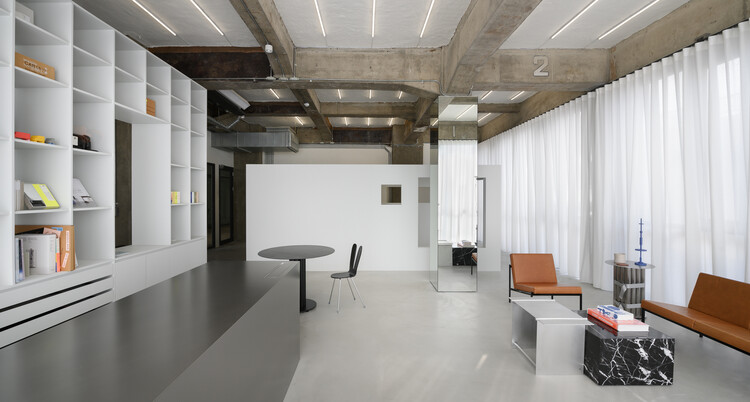
Phuffle Restaurant and Café / Too.architects
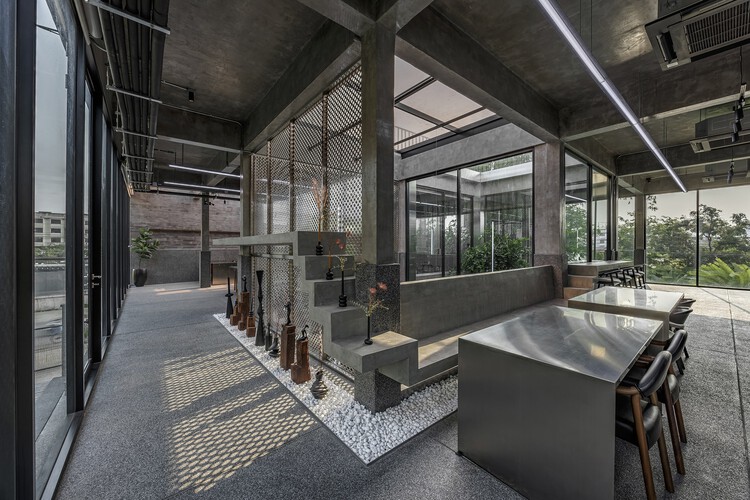
JHW Store / Atelier TAO+C
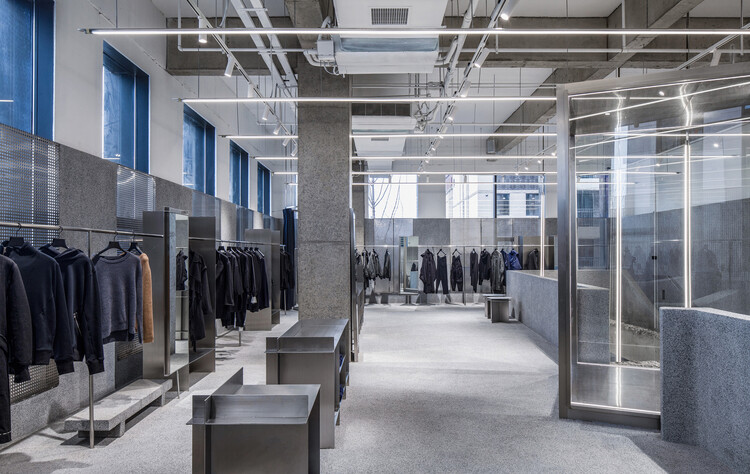
Stravinsky Salon / Seear-Budd Ross
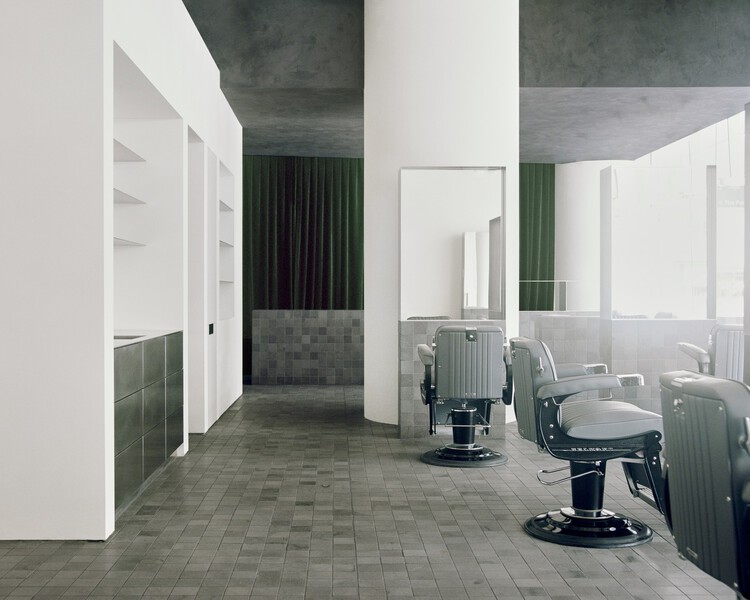
This article is part of an ArchDaily series exploring interior design features from our own project database. Each month we will highlight how architects and designers are using new elements, new features and new signatures in interiors around the world. As always, we at ArchDaily greatly value our readers' input. If you think we should mention specific ideas, please submit your suggestions.
